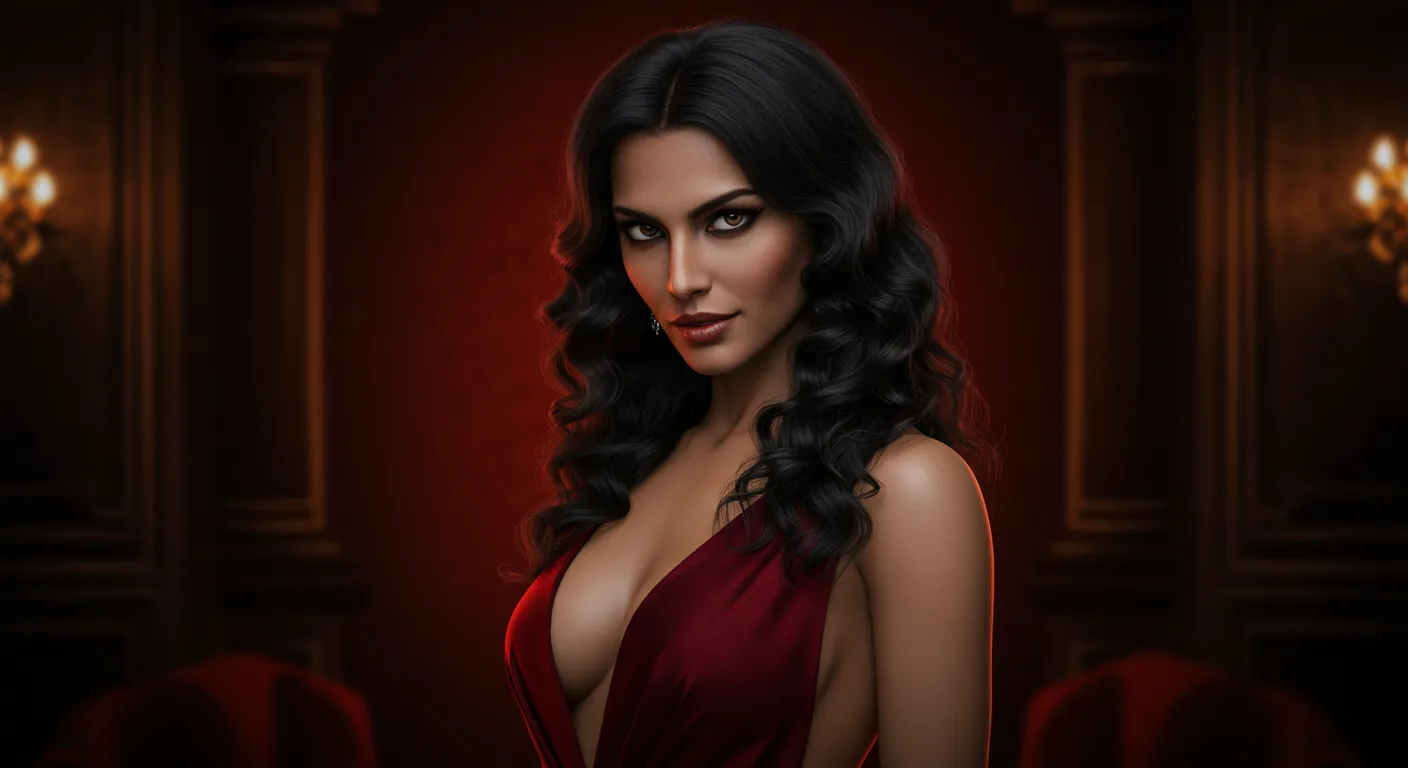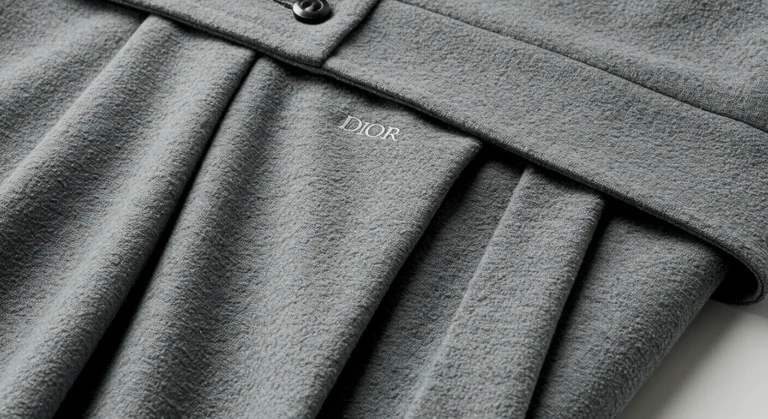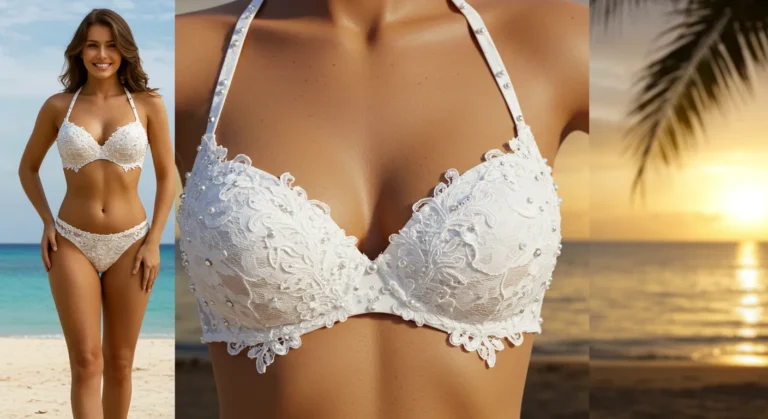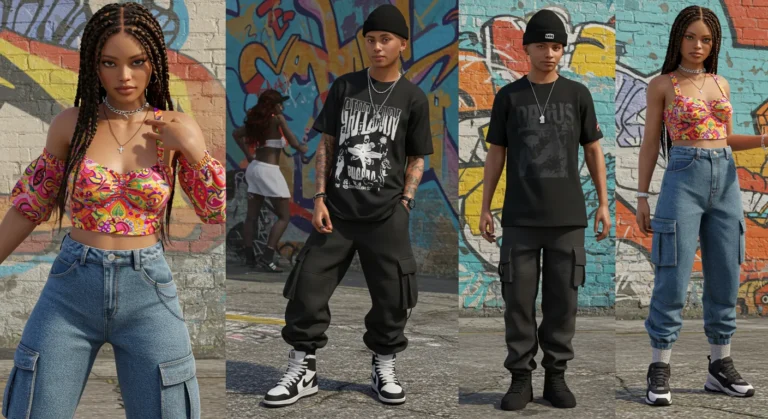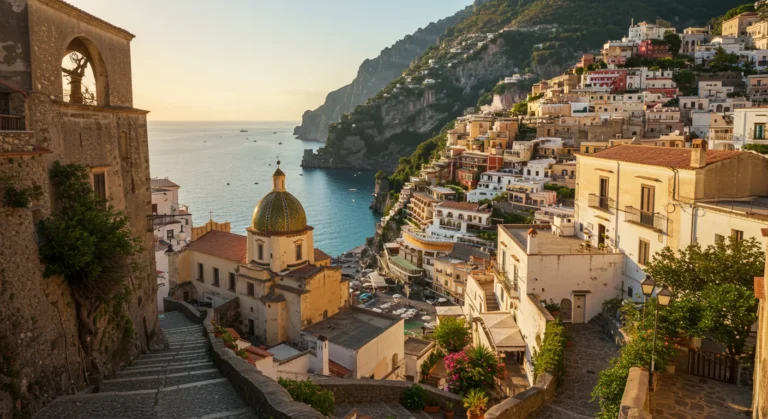best 10 Hot Female Villains Who Stole the Show
introduction
In the vast realm of pop culture, one archetype continues to fascinate audiences across generations — the Hot Female Villains. These complex, stylish, and often morally ambiguous characters captivate us not just because they are wicked, but because they are intelligent, powerful, and unapologetically bold. In a cinematic world long dominated by male antiheroes, these women have carved out a niche that is equal parts dangerous and dazzling.
What makes these women so magnetic? Is it the power they wield? The fashion they flaunt? Or the fearless attitude with which they walk into every room, ready to own it — or destroy it? The answer lies in their ability to blur the lines between villainy and seduction, blending beauty with ruthlessness, and elegance with ferocity.
From Harley Quinn’s rebellious charm to Hela’s regal dominance, Hot Female Villains aren’t just accessories to the hero’s journey — they are the story. They break the mold of damsels in distress, redefining femininity with confidence and sometimes chaos. These characters are more than eye candy; they’re cultural forces who represent independence, vengeance, and power, often overshadowing even the protagonists they’re meant to oppose.
In this article, we’ll explore the top 10 hot female villains who have left a lasting impression on the big screen and small screen alike. Not only are they beautiful and iconic, but each one has made a significant impact on how we view strength and seduction in modern storytelling. Whether you love them or hate them, one thing’s for sure — you can’t ignore them.
So, buckle up as we dive into a dark yet dazzling world where villains slay — both figuratively and fashionably.
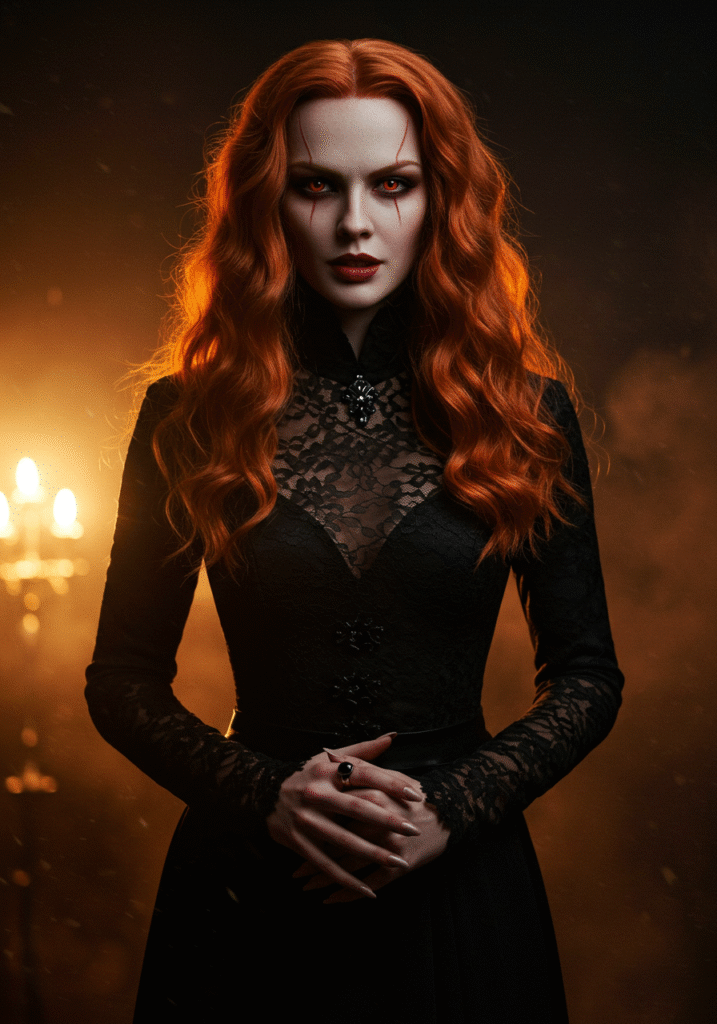
Top 10 Hottest Female Villains
Let’s take a closer look at the most unforgettable hot female villains across pop culture who turned heads and rewrote the rules.
1. Harley Quinn
Portrayed by Margot Robbie,Hot Female Villains Harley Quinn is equal parts chaos and charisma. Her twisted romance with the Joker, flashy outfits, and unpredictable behavior make her an icon. She’s not just hot — she’s explosive.
2. Mystique
With shapeshifting powers and icy blue skin, Mystique is the ultimate blend of sensuality and strength. Played by Rebecca Romijn and later Hot Female VillainsJennifer Lawrence, her villainous journey questions morality and identity.
3. Hela
Cate Blanchett’s Hela is the goddess of death and fashion. Her sleek black armor, dramatic horns, and commanding presence made her one of Marvel’s most visually stunning villains.
4. Catwoman
Michelle Pfeiffer’s portrayal of Catwoman is unforgettable. She’s part antihero, part dominatrix, and 100% captivating. Her leather-clad presence is as iconic as her acrobatics.
5. Amy Dunne
Rosamund Pike’s Amy is beautiful, brilliant, and terrifyingly calculated. Her weapon is not a gun or a blade, but manipulation — and she wields it flawlessly.
6. Bellatrix Lestrange
Helena Bonham Carter’s Bellatrix is mad, bad, and dangerously loyal. Her Gothic aesthetic and unhinged personality make her a terrifying yet captivating villainess.
7. O-Ren Ishii
Lucy Liu’s O-Ren Ishii is elegance with an edge. As a leader of a deadly assassin clan, she blends honor, vengeance, and striking beauty in a deadly package.
8. Cersei Lannister
Played by Lena Headey, Cersei redefines regal evil. Her cold ambition, political cunning, and timeless beauty make her a villain who was always three steps ahead.
9. Cruella de Vil
Emma Stone reinvented Cruella as a rebellious fashion prodigy with a tragic origin. Equal parts punk and couture, she dazzled audiences with her theatrical flair.
10. Sil
Natasha Henstridge played Sil, a seductive alien-human hybrid. Though her character was designed for destruction, her ethereal beauty added to her otherworldly danger.
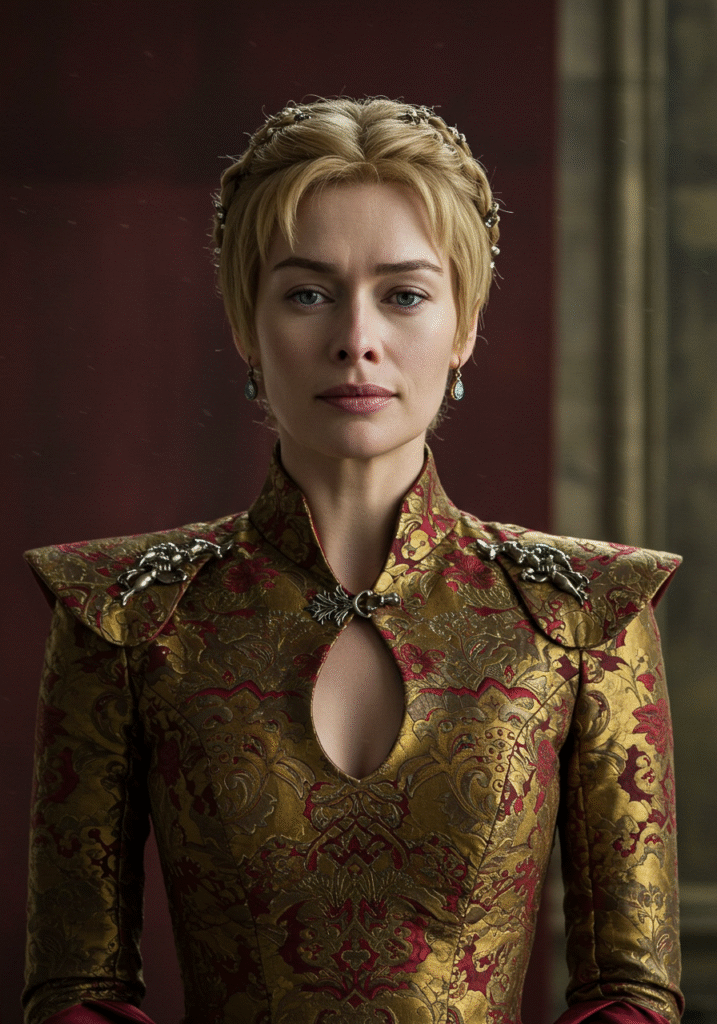
The Role of Fashion
What sets hot female villains apart from their male counterparts isn’t just their motivations — it’s their style. These characters use fashion as a statement, a form of psychological warfare, and a way to assert dominance before they even speak a word. Clothing becomes a narrative device, transforming them into walking symbols of their power.
Take Hela, for instance. Her headpiece alone could silence a room. Clad in black and emerald armor, she radiates danger and royalty. Harley Quinn, on the other hand, embraces chaos through mismatched pieces, glitter, and tattoos — visual cues of her anarchic identity.
Cruella’s high-fashion ensembles and DIY punk aesthetic scream rebellion. In Cruella (2021), every outfit was a battle cry against conformity. Similarly, Catwoman’s sleek black latex not only emphasized her feline agility but doubled as armor and allure.
These characters use fashion to say, “I own this space.” From blood-red lipstick to leather trench coats, their outfits are strategic — meant to seduce, intimidate, and provoke. They’re not just dressing up; they’re dressing for war.
Villainous style also reflects the duality within them. They can be nurturing and nurturing destruction, seductive and sinister — and their fashion helps us read those layers. Bellatrix’s tattered robes reflect madness. Mystique’s nudity cloaked in blue scales suggests a rejection of shame or societal restraint.
Costuming these characters is an art, and when done well, it becomes inseparable from their identity. Fashion helps amplify their power and influence — and for many fans, it’s what makes them so memorable.
Why We Can’t Look Away
There’s a reason audiences are drawn to hot female villains. Psychologically, they represent suppressed desires and a break from social expectations. Where the typical heroine might follow the rules, these women bend — or break — them. That’s alluring.
Most of us have been conditioned to associate beauty with goodness. When someone who looks like a goddess does something truly wicked, it short-circuits our expectations and makes us pay closer attention. It’s that unexpected contrast — seductive appearances masking sinister intentions — that fascinates us.
Hot female villains are also empowered. They say what they want, do what they want, and take what they want — often without apology. That kind of unapologetic self-possession is rare in real life, and deeply attractive in fiction.
Characters like Amy Dunne and Cersei Lannister thrive on control. They manipulate everyone around them, proving they’re not just beautiful but brilliant. This combination of aesthetics and intellect is intoxicating to watch.
And let’s not forget: rebellion is sexy. These women aren’t trying to be liked — they’re trying to win. They’re unpredictable, complex, and dangerous — and that mystery makes them magnetic.
In a culture that often praises female passivity, these characters offer a radical alternative. They’re not necessarily role models, but they challenge what we expect from women in media — and that makes them unforgettable.
FAQs
Why are hot female villains so popular in movies and TV?
Hot female villains captivate audiences because they break the mold. They combine physical beauty with power, cunning, and rebellion — making them multidimensional and impossible to ignore.
Are these characters always evil?
Not necessarily. Many hot female villains operate in shades of gray. Catwoman is a great example — she’s part hero, part villain, always walking the line.
Are femme fatales the same as hot villains?
Femme fatales are a subcategory of hot female villains. They use seduction and charm to manipulate and achieve their goals, often in noir or psychological thrillers.
Do hot villains overshadow the heroes?
Often, yes. When crafted well, these characters steal the spotlight because they offer a mix of mystery, beauty, and charisma that many heroes lack. Audiences tend to remember a well-dressed, sharp-tongued villain long after the credits roll.
What’s the cultural significance of these characters today?
In an age of evolving gender roles, hot female villains represent a rebellion against traditional expectations. They are powerful, fearless, and complicated — giving viewers a fresh perspective on what female strength and agency can look like.
Pros and Cons
Pros:
Empowerment & Complexity
Hot female villains and femme fatales challenge stereotypical female roles. They showcase ambition, intellect, and autonomy. Instead of being sidekicks or romantic interests, they become the story’s driving force.
Iconic Fashion and Identity
These characters bring unforgettable style — from Harley Quinn’s wild aesthetic to Cersei’s queenly couture. Their fashion statements double as storytelling devices, making them visually and thematically compelling.
Moral Gray Areas Spark Debate
Audiences love discussing these characters because they’re not black-and-white. Are they truly evil, or just a product of circumstance? This ambiguity deepens the narrative and invites conversation.
Increased Screen Presence for Women
Hot villains often receive more attention and screen time than flat “good girl” roles, offering actresses the chance to explore powerful, layered personalities.
Cons:
Oversexualization
One major criticism is the hypersexualization of these characters. While some use their sexuality as power, others are designed to appeal to the male gaze — which can undermine their complexity.
Reinforcing Harmful Stereotypes
Not all portrayals are progressive. Some femme fatales fall into the “crazy ex” or “evil seductress” tropes, reinforcing outdated ideas about women and danger.
Limited Evolution in Some Stories
Characters like Bellatrix or Sil often remain one-dimensional — lacking backstory or redemption arcs. When female villains don’t evolve, it can feel like wasted potential.
Glorification of Toxic Behavior
There’s a fine line between appreciating a character’s complexity and glorifying their actions. Audiences must be careful not to romanticize manipulation or abuse just because it comes from an attractive character.
Final Thoughts
Hot female villains are no longer side notes or mere eye candy. They’re at the forefront of modern pop culture, representing a shift in how we view femininity, power, and morality. These characters are seductive not just in appearance, but in influence. They demand attention, spark debate, and reshape the storytelling landscape.
In a world that’s moving beyond the damsel-in-distress narrative, hot villains give us women who are fierce, strategic, and self-possessed. They may be flawed, but they’re never boring. They don’t wait to be saved — they break chains, crush enemies, and rewrite the script on their own terms.
Culturally, they represent something vital. Whether it’s a critique of beauty standards, a rebellion against patriarchy, or a challenge to morality, these women reflect deeper societal conversations. Think of Cersei, whose political ambition mirrors real-world power dynamics. Or Amy Dunne, who forces viewers to question media narratives around victimhood and femininity.
And let’s not forget the fans. From Halloween costumes to TikTok recreations, hot female villains have become icons — symbols of strength, complexity, and, yes, a little chaos. They resonate with audiences because they embody what so many people feel but can’t express: the desire to be unapologetically powerful, even if the world calls it villainy.
So, whether you’re watching Harley swing a bat in sequins or Mystique turn blue and disappear, remember: these women aren’t just characters. They’re cultural forces. And they’re here to slay — in every sense of the word.
Conclusion
In an entertainment world saturated with formulaic heroes, hot female villains offer a breath of fresh — albeit dangerous — air. These femme fatales and villainesses represent the unapologetic side of womanhood: bold, confident, cunning, and, yes, complicated. They’ve existed in literature and cinema for decades, but their recent rise in pop culture marks a significant shift in how we define female power.
The most compelling part of these characters is their refusal to be boxed in. They are not one-note villains. They’re seductive without being submissive, powerful without apology, and fashionable with a purpose. From the crown-bearing menace of Hela to the street-style anarchy of Harley Quinn, every character brings something unique to the table.
In terms of SEO and cultural relevance, “hot female villains” are trending not just because they look great — but because they represent an evolution of character development. These women aren’t defined by their male counterparts. They have agency, goals, and backstories. They are leaders, schemers, warriors, and sometimes, victims of circumstance. And all of that makes them relatable.
This complexity is what fuels the fan obsession. Social media thrives on sharing clips, quotes, and fashion inspired by these characters. Halloween sees thousands dressing up as Catwoman or Cruella. And let’s face it — how many times have you rooted for the villain because she was just that cool?
Moreover, these characters provide a unique opportunity for conversations about gender roles, media portrayals, and power dynamics. Why is a woman with ambition still feared? Why is beauty considered dangerous? These are questions these characters force us to confront, even if they do it while throwing punches or casting spells.
Finally, in a digital world where visual aesthetics matter as much as narrative, hot female villains are content gold. From film analysis blogs to cosplay guides, their influence spans industries — including beauty, fashion, entertainment, and social discourse.
So, yes — we need hot female villains. Not because they’re evil, but because they’re real. Not because they wear leather and red lipstick, but because they speak to something deeper: the untamed, empowered, and stylish side of femininity that refuses to be quiet. They’re rebels, icons, and most of all — unforgettable.

